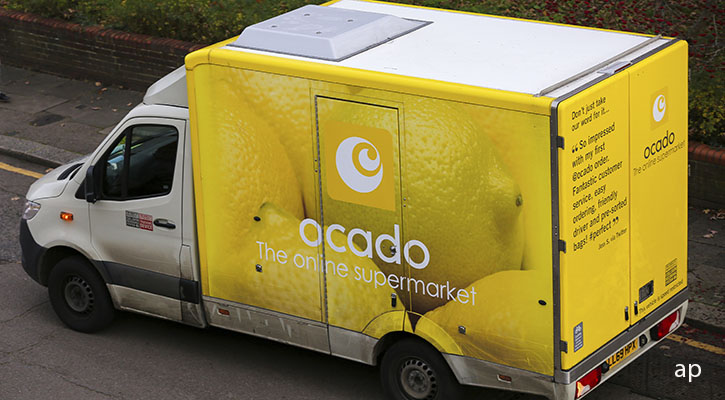Say What?
An exemplary reader referred me to a recent Forbes article, called “3 Funds That Let You Retire on Dividends Alone.” (Every reader is good, but a reader who submits a column idea rates as exemplary.) Wrote the reader, “John, these funds have the possibility of declining in value, but they are always presented as being fairly risk-free. Please do an article that exposes the risks.”
Your wish, my command.
The author’s recommended funds are closed-end funds. (Once popular enough to challenge their mutual fund cousins, closed-end funds have become an industry backwater.) According to the author, Liberty-All Star Growth (ASG), Gabelli Equity Trust (GAB), and Clough Global Opportunities (GLO) each pay annual dividends exceeding 7%. Given that those funds invest solely in equities, that figure arouses suspicion. How on Earth, in today’s marketplace, can stock funds yield more than 7%?
The Reality
The answer is simple: they do not. The table below provides: 1) the total income received by each fund from its investments during its most recent fiscal year; 2) the fund’s expenses; and 3) the fund's net income, derived by subtracting the second item from the first. The table then shows 4) each fund’s size, as of its fiscal year-end, which can be used with its net income to calculate 5) the fund's true yield. Against that figure is juxtaposed 6) the fund’s purported yield, per the “3 Funds” article.
(Officially, funds publish a statistic called an income ratio that is similar to my true yield calculation. However, as the income ratio requires data that I cannot obtain from public reports, I have substituted my homemade version. Close enough.)

Quite a difference! Here is the reason for the discrepancy. Although these funds pay little income, they routinely make capital gains distributions, created from their net realized profits when trading their portfolios. In addition, the Gabelli and Clough funds (although not, at least in recent years, Liberty’s fund) enhance their capital gains distributions by periodically returning investment capital.
When reporting their distributions, closed-end funds frequently conflate all three varieties into a single figure that they call “dividends.” Those are not dividends in the conventional sense, that being portfolio income. Rather, they are dividends in a very loose sense, meaning “payments that the funds make to shareholders, regardless of the source of those monies.” In other words, a closed-end fund that stashed its assets under a mattress, then disbursed $5 out of every $100 that it possessed each year, could (and no doubt would) claim that it pays a 5% dividend.
Nothing Special
The author’s funds don’t offer remarkable yields, as the term is normally defined. The funds make large distributions not because they receive extensive income, but instead because of accounting tricks. An S&P 500 fund could operate similarly, were it extremely tax-inefficient. As could you. Buy several stocks, trade them often, then remove the cash from your profitable trades. Voila! You, too, can enjoy an impressive portfolio “yield.”
My quarrel is not with the funds themselves. Each has outgained its Morningstar Category average over the trailing 10 years, with Liberty’s fund also managing the additional and impressive feat of beating the S&P 500. My dispute is instead with the suggestion that these funds are special. They are not. They are ordinary funds that invest in ordinary fashion, and which achieve ordinary (albeit strong) performances.
The author’s choices will not suit his audience of income-seeking retirees. Because they are fully invested equity funds, they plummet when the stock market crashes. In 2008, the best-performing of the three funds was Liberty All-Star Growth, which dropped 40.6%. The author states that holding a portfolio that consists of these three funds will make “a retiree comfortable.” Surely not.
Exploring Another Path
The question arises: If retirees can’t receive high and safe income from equity funds, can they do instead with balanced or bond funds?
No, they cannot. Unfortunately, generous income is inevitably linked to stock-market performances. Besides high-dividend equities, which naturally suffer when stocks tumble, high-income funds either hold bonds that directly respond to economic downturns, such as junk bonds, or those that are indirectly sensitive, for example, emerging-markets debt. Either way, such funds are far too volatile to be relied upon by retirees, except as slivers of their overall portfolios.
For example, of the 157 closed-end funds that currently yield more than 4%, the average 2008 total return was negative 31%. (The results are similar for conventional mutual funds.) During March 2020, when COVID-19 roiled the global markets, the average return for those 157 funds was negative 14%. There was little escape. In 2008, all but five of those 157 funds suffered double-digit losses, while in March 2020 not a single fund turned a profit.
In that sense, the author’s instincts were correct. He recommended only three funds in his article, which seems at first glance to be rash. Surely retirees will wish to place their eggs into more than three baskets. However, with funds that truly pay high yields--that is, as opposed to the low-yielding funds that the author advocated--diversification brings little benefit. Owning many high-paying funds merely means more ways to lose money when the stock market crumbles.
A Dangerous Illusion
The “3 Funds” article makes a bold claim: a portfolio that succeeds on “dividends alone--without having to touch our principal.” (The italics belong to the author.) Many investors find such promises alluring. They would like to generate high income, through a portfolio that maintains a relatively steady value, without ever dipping into their capital. Spending only income, while leaving principal intact, feels responsible.
Their wish is an illusion. It can’t happen. Rather than pursue yield that isn’t truly yield at all, as with the author’s recommended funds, or stretch for income by owning bonds that crash along with the stock market, it’s best to rein in one’s income expectations. Settle for a lower yield, then supplement those receipts as necessary by withdrawing portfolio assets. After all, that is exactly how the asset managers that were cited by the author have invested.
This column was originally published on Morningstar.com. About the author: John Rekenthaler (john.rekenthaler@morningstar.com) has been researching the fund industry since 1988. He is now a columnist for Morningstar.com and a member of Morningstar's investment research department. John is quick to point out that while Morningstar typically agrees with the views of the Rekenthaler Report, his views are his own.









.jpg)




















